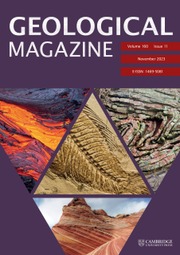An Introduction to Continuum Physics
Adopting a unified mathematical framework, this textbook gives a comprehensive derivation of the rules of continuum physics, describing how the macroscopic response of matter emerges from the underlying discrete molecular dynamics. Covered topics include elasticity and elastodynamics, electromagnetics, fluid dynamics, diffusive transport in fluids, capillary physics and thermodynamics. By also presenting mathematical methods for solving boundary-value problems across this breadth of topics, readers develop understanding and intuition that can be applied to many important real-world problems within the physical sciences and engineering. A wide range of guided exercises are included, with accompanying answers, allowing readers to develop confidence in using the tools they have learned. This book requires an understanding of linear algebra and vector calculus and will be a valuable resource for undergraduate and graduate students in physics, chemistry, engineering and geoscience.
- Equips the reader with a fluent understanding of tensor notation, an extremely powerful mathematical technique in science and engineering
- Provides numerous real-world examples and applications of continuum physics in geoscience and physics
- Provides separate and detailed sections on the mathematical methods required to understand and solve the governing equations of continuum physics
Reviews & endorsements
'With the ever-increasing power of molecular-level computer simulations, a textbook built around the question of how the large-scale continuum properties of matter emerge from the molecular level is not only timely but also necessary. Steven Pride has succeeded in providing such a text, which not only covers a vast array of fields, but also manages to explore them in depth. I highly recommend it.' Alex Hansen, Center of Excellence PoreLab, Norwegian University of Science and Technology
'A unique resource for teaching continuum physics, this text includes a thoughtful perspective connecting molecular to macroscopic scales, along with examples motivated by applications to our planet, environment and sustainability. The treatment of crystal-surfaces and transport processes, as well as the integration of mechanics with electromagnetics, provides insights essential for a broad community of students and researchers, from chemists and geophysicists to hydrologists and materials physicists.' Raymond Jeanloz, Earth and Planetary Science, and Astronomy, UC Berkeley, USA
Product details
February 2025Hardback
9781108844611
694 pages
250 × 176 × 42 mm
1.36kg
Available
Table of Contents
- Preface
- Part I. Continuum Physics:
- 1. An Introduction to Tensor Calculus
- 2. Continuum Mechanics
- 3. Continuum Theory of Electromagnetism and Gravity
- 4. Elasticity and Elastodynamics
- 5. Fluid Mechanics
- 6. Equilibrium Thermodynamics
- 7. Non-equilibrium Diffusive Transport
- Part II. Mathematical Methods:
- 8. Partial Differential Equations
- 9. The Fourier Series
- 10. Fourier Analysis
- 11. Contour Integration Methods and Applications
- 12. Green's Functions
- References
- Index.




